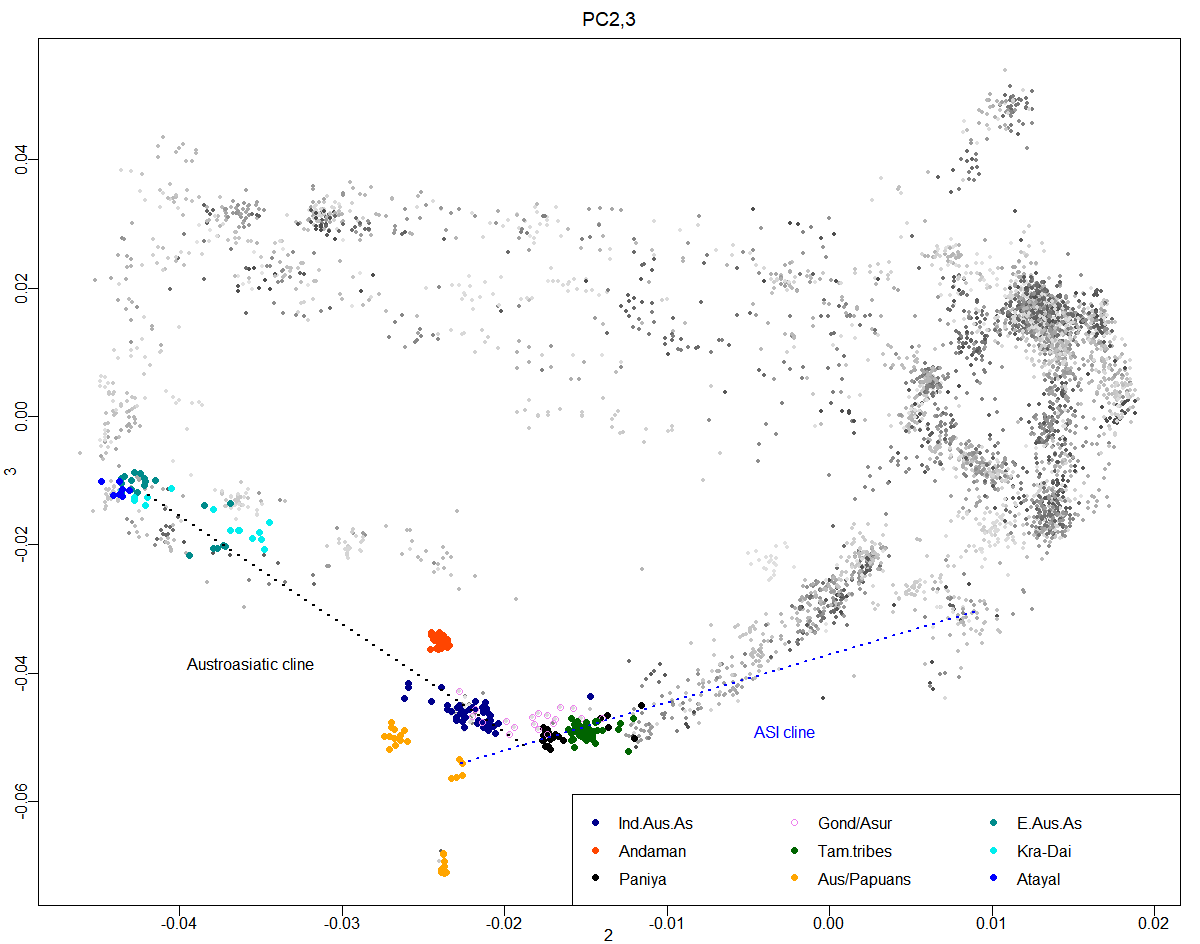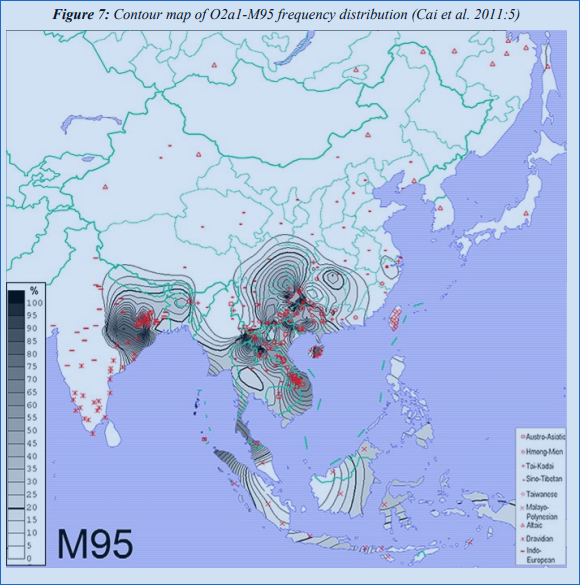Intro
Not to be confused with Austronesian (a distinct sister language branch).
This was the male-biased Munda influx (likely via sea route into Orissa region) dated to be approximately around 3000 YBP with a lower bound of 3800 YBP.
References
Observations
-

austro-asiatic-asi-pca - “Southeast Asian component is stronger in the southern cluster of Munda groups than in the northern cluster.”

munda-o2a1-m95 - The Austroasiatic languages are a coherent family like IE with populations in India and East Asia like Vietnam, Cambodia, Thailand and Malaysia. In India there are multiple branches in Meghalaya/greater Bengal like Khasic; Munda like Santhal; and Nicobaric of the Nicobar Islands.
- “Munda populations are Indian populations with a Southeast Asian component that was introduced by a small male Austroasiatic founder population, with no particular connection to Khasi. The indigenous South Asian population was less influenced from ANI populations from the Northwest than all current dominantly ASI populations. The admixture has been dated to either the Neolithic or Chalcolithic in a location that had not yet experienced Indo-Aryan influx.”
- The genomic data indicates that the core Indian group Munda is primarily acquired their Austroasiatic ancestry from SouthEast Asia perhaps from the same group that also reached the Malaysia. The Indian movement was clearly male-biased. The position of the Indian AA people position in the above PCA overlaps with the Dravidian Gond and the related Asur people of Jharkhand who speak an AA language.
- They lie close to one end of the so called Ancestral South Indian cline which includes several other Dravidian speaking tribes like the Paniyan and other tribes of the Tamil country with little west Asian Iranian farmer type ancestry which rises towards the other end of the ASI cline. Of course being at the end of this cline they have hardly any steppe ancestry. Thus, they appear to have emerged from an East Asian center and mixed with the mostly unmixed old Indian hunter-gatherers still represented by the Gond and various Drav-speaking tribe of TN.
Conclusion
- “The Munda Maritime Hypothesis” (paper) seems most plausible. “A small Austroasiatic population then brought pre-Proto-Munda by means of a maritime route across the Bay of Bengal to the Mahanadi Delta region – an important hub location for maritime trade in historic and pre-historic times. The interaction with a local South Asian population gave rise to proto-Munda and the Munda branch of Austroasiatic. The Maritime Hypothesis accounts for the linguistic evidence better than other scenarios such as an Indian origin of Austroasiatic or a migration from Southeast Asia through the Brahmaputra basin. The available evidence from archaeology and genetics further supports the hypothesis of a small founder population of Austroasiatic speakers arriving in Odisha from Southeast Asia before the Aryan conquest in the Iron-Age.”
- “The AA incursion is dated to be approximately around 3000 YBP with a lower bound of 3800 YBP. Thus, they are unlikely to have been there before the Aryans in India. This puts a conclusive end to the Para-Munda hypothesis for Harappan and also suggests that the “ka-ki-ku” substrate in Indo-Aryan is likely from a Harappan language and not Munda or para-Munda. Thus we can now say Munda did not play any role in the formation of the core Indic system in the Northwest. "